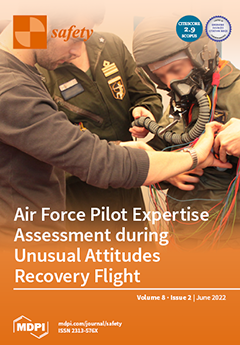Open AccessArticle
Air Force Pilot Expertise Assessment during Unusual Attitude Recovery Flight
by
Gianluca Borghini, Pietro Aricò, Gianluca Di Flumeri, Vincenzo Ronca, Andrea Giorgi, Nicolina Sciaraffa, Claudio Conca, Simone Stefani, Paola Verde, Angelo Landolfi, Roberto Isabella and Fabio Babiloni
Cited by 4 | Viewed by 3629
Abstract
Pilot training and expertise are key aspects in aviation. A traditional way of evaluating pilot expertise is to measure performance output. However, this approach provides a narrow view of the pilot’s capacity, especially with regard to mental and emotional profile. The aim of
[...] Read more.
Pilot training and expertise are key aspects in aviation. A traditional way of evaluating pilot expertise is to measure performance output. However, this approach provides a narrow view of the pilot’s capacity, especially with regard to mental and emotional profile. The aim of this study is hence to investigate whether neurophysiological data can be employed as an additional objective measure to assess the expertise of pilots. In this regard, it has been demonstrated that mental effort can be used as an indirect measure of operator expertise and capacity. An increase in mental effort, for instance, can automatically result in a decrease in the remaining capacity of the operator. To better investigate this aspect, we ask two groups of Italian Air Force pilots, experienced (Experts) and unexperienced (Novices), to undergo unusual attitude recovery flight training simulations. Their behavioral (unusual attitude recovery time), subjective (mental effort demand perception) and neurophysiological data (Electroencephalogram, EEG; Electrocardiogram, ECG) are collected during the entire flight simulations. Although the two groups do not exhibit differences in terms of unusual attitude recovery time and mental effort demand perception, the EEG-based mental effort index shows how Novices request significantly higher mental effort during unusual conditions.
Full article
►▼
Show Figures





